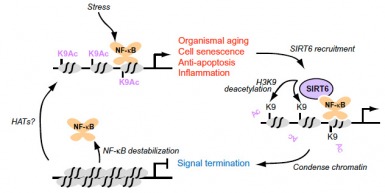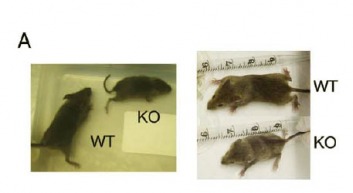This web page was produced as an assignment for Gen677 at UW-Madison Spring 2009
HDAC(histone deacetylase) reaction Sirturin Family

From basangpanaginip retrieved from http://basangpanaginip.blogspot.com/2007/04/scientific-race-to-stop-human-aging.html
The mysteries of aging
Aging is a process that is associated with a gradual deterioration of an organisms body. This deterioration of an organism leads to an increased susceptibility to diseases such as cancer, diabetes, heart disease and neuro-degeneration. The process of aging is thought to occur in many different ways some of the hypothesis how aging is believed to occur is by oxidative stress or telomere shorting. The telomere theory says that as cells divide each division causes the cells telomeres to shorten a little each division. This wearing away of telomeres is believed to predict the time of cell death and is indicative of a persons biological age (Mayor, 2009). While the theory of oxidative stress believes that reactive oxygen species from every day metabolism causes damage to the cell and eventually leads to overall aging of the organism. These different theories of aging show that aging is not just an gradual wearing out but is a process.
SIRT6 and its link to aging

One of the longevity genes discovered encodes a protein called SIRT1, which is 1 of 7 proteins. These proteins are known as a class III histone deacetlyase, which means that they use NAD+ to remove Lysine acetyl from proteins or histones. Eventually the function of SIRT6 was discovered by researchers observing that SIRT6 knockout mice showed a premature aging phenotype (Mostoslavsky et al., 2006). It was believed that this aging phenotype is due to SIRT6 being a histone H3 lysine 9 deacetylase specific at telomeric chromatin and this lead to telemoric dysfunction (Michishita et al., 2008). The latest discover seems to suggest that the SIRT6 knockout aging phenotype is instead due to SIRT6 deacetylating H3 lysine 9 histones near NF-kB target gene promoters and SIRT6 is recruited there through a direct a physical interaction with RELA (Kawahara et al., 2008). SIRT6 deacetylation of histones near NF-kB genes lead to decreased NF-kB genes expression and prevents apoptosis and cellular senescenceing via NF-kB. So the disease phenotype of premature aging is brought on by loss of SIRT6, which makes NF-kB genes more active leading to increased cell death. This increased cell death due to hyperactive NF-kB genes leads to premature aging in the mice by increasing cell senescenceing and apoptosis . This knowledge that SIRT6 has some role in the aging process leads to the possible hope of some pharmaceutical intervention that could extend an organism life spain.
SIRT6 knockout symptoms

From Mostoslavsky et al Genomic instability and agind like phenotype in the absence of mammalian SIRT6 cell paper. (2006). Wild type mice vs knockout SIRT6 mice [photograph]. Retrieved from Mostoslavsky et al 2006 paper
This picture is illustrating the size difference between wild type and SIRT6 knockout 6. Also illustrated is the over all unhealthy look 21 day old knockout mouse compared to the wild type mouse.
Symptoms of SIRT6 knockout
The SIRT6 mouse grows normal for several weeks then it shows sings of multiorgan failure and dies by 1 month. Also the mouse has severe bone mineral defects like osteoporosis, spin curvature, lympocyte attrition and other metabolic defects like large drops in serum glucose and IGF-1 levles (Kawahara et al., 2008). And these mice are extremly sensitive to certain types of DNA damage which leads to genomic instability.
Goal of 677Gen project
The goal of my project is to better understand the SIRT6 protein by doing genetic/protein comparsions of the SIRT6 gene in different organisms and the other Sirtuins and get a better understanding of its role in aging.
Mark Devries
Email [email protected]
last updated 1/22/09
http://www.gen677.weebly.com
